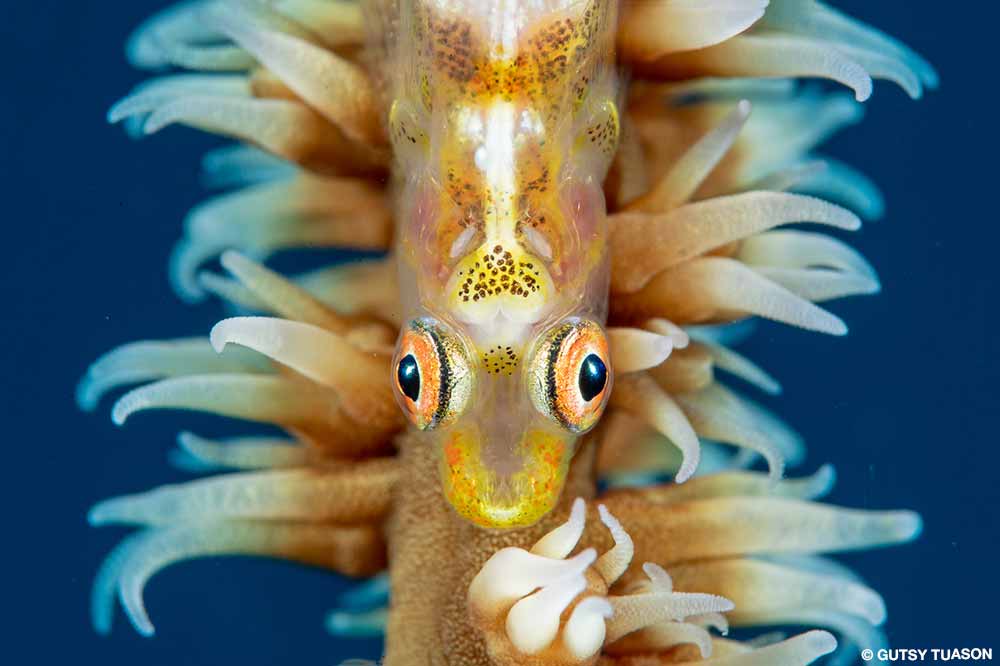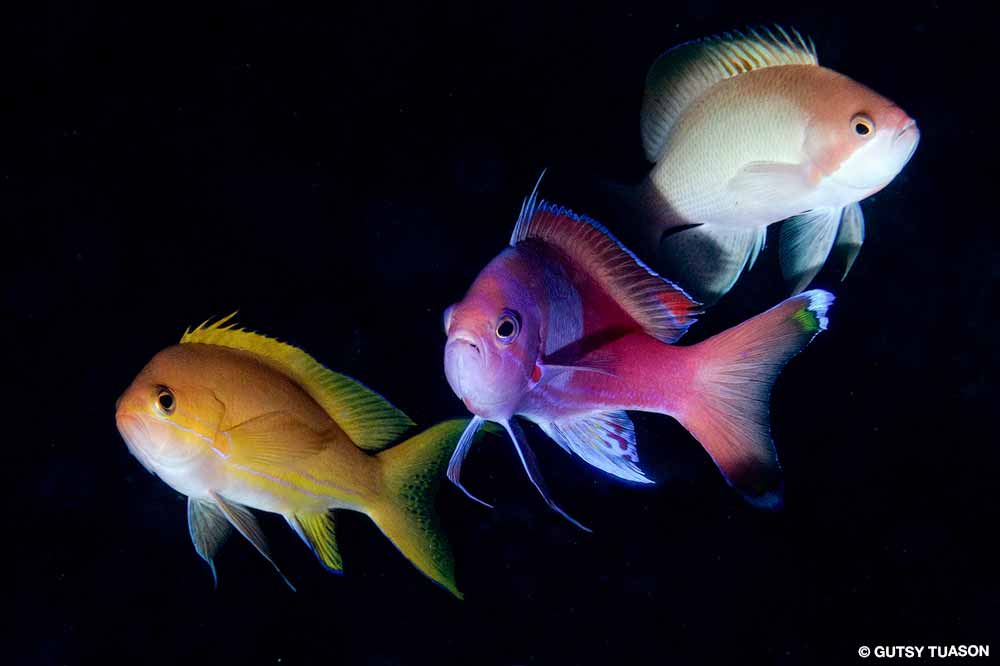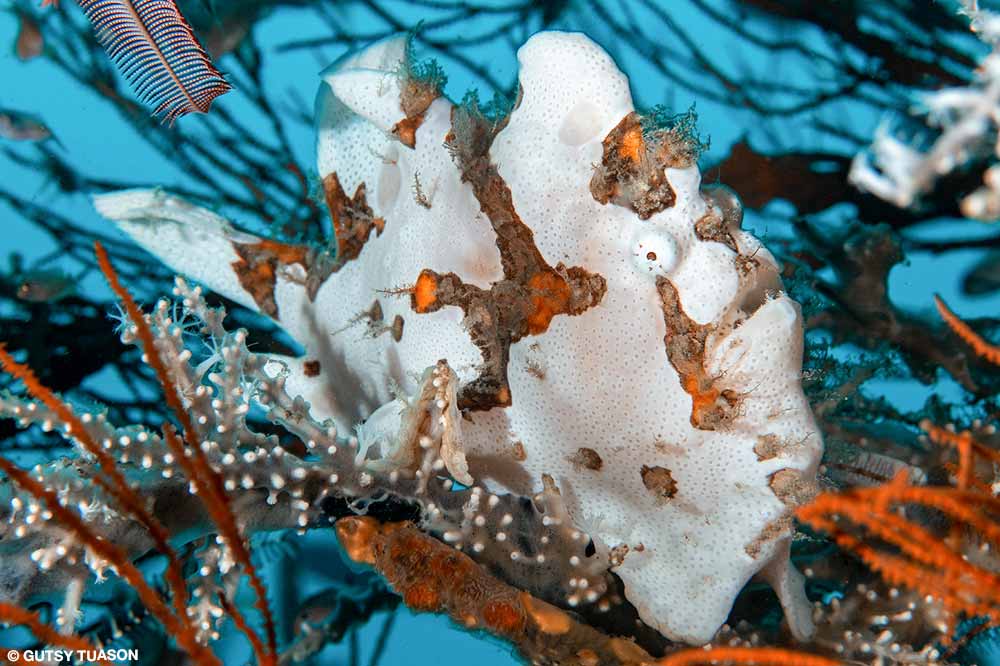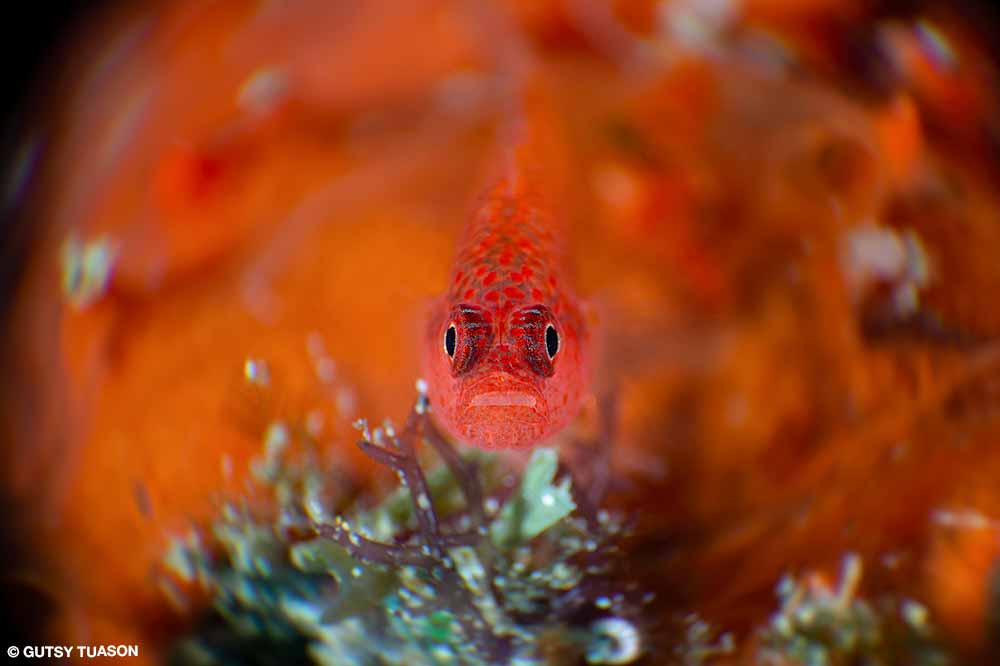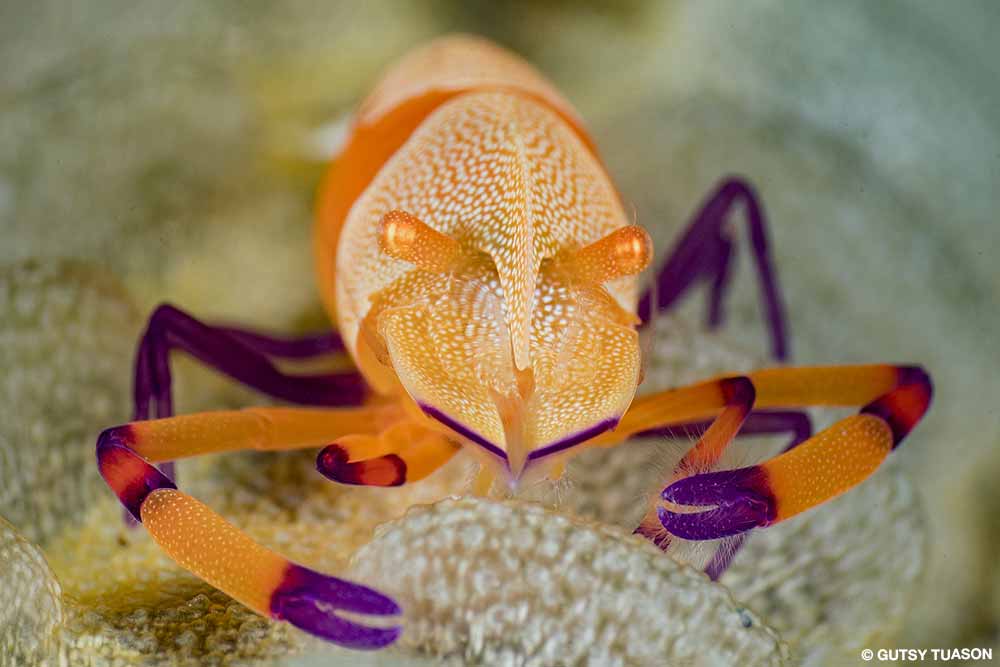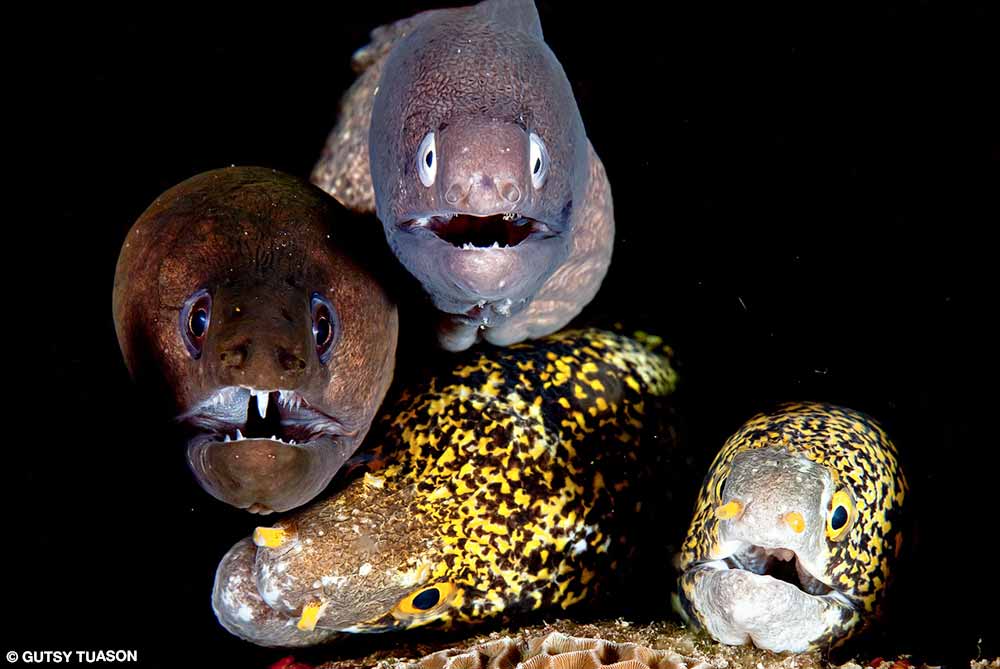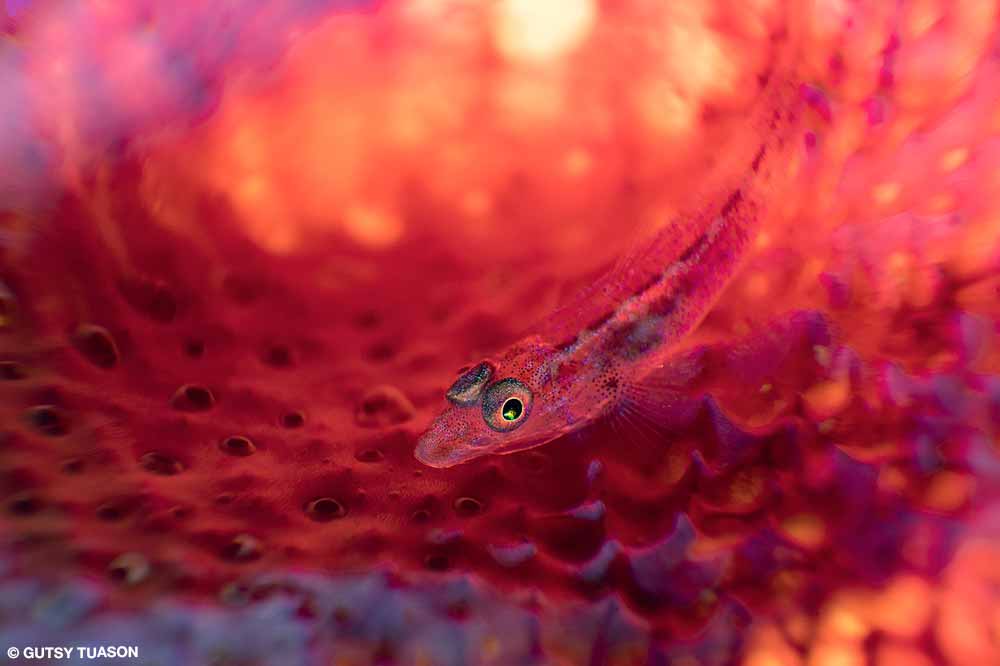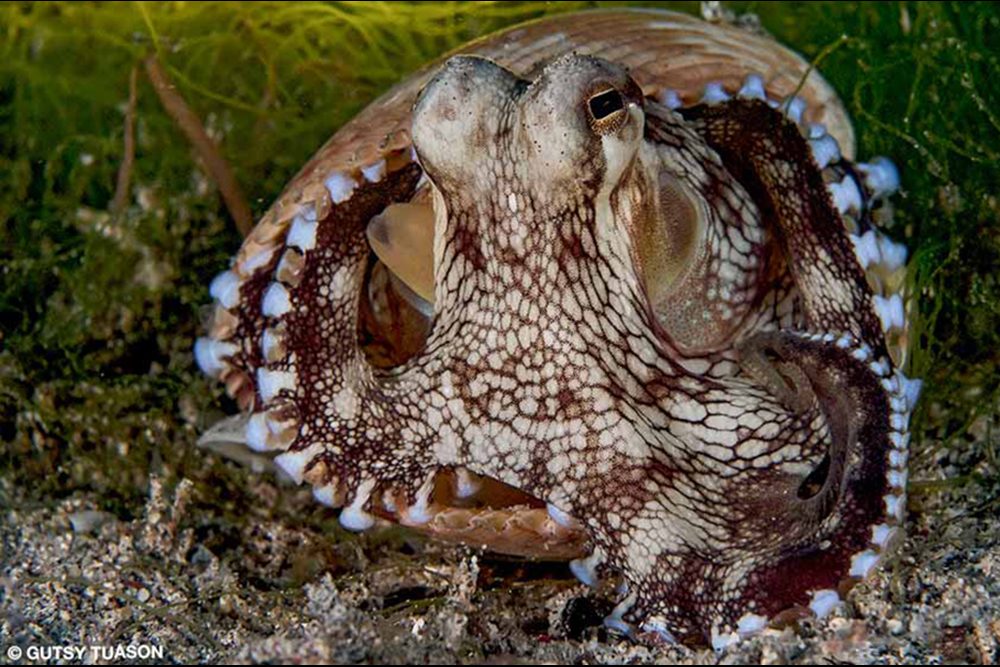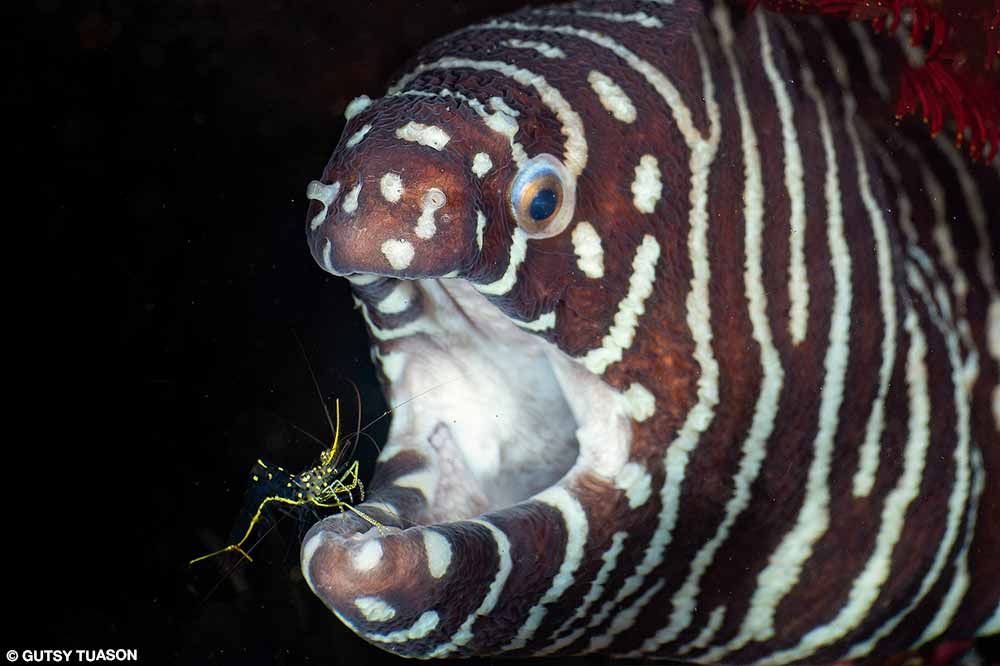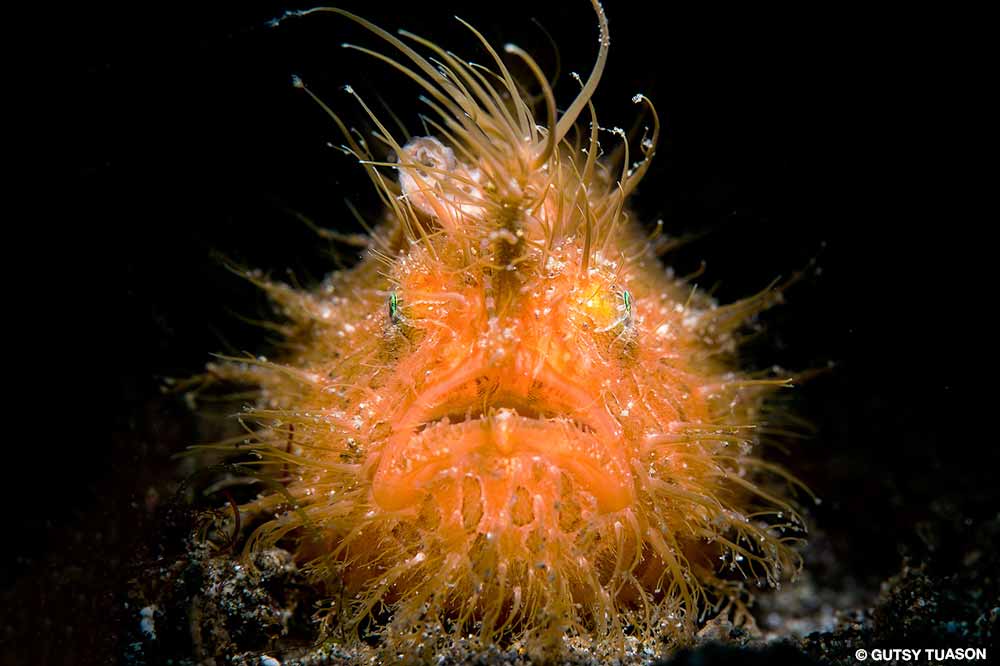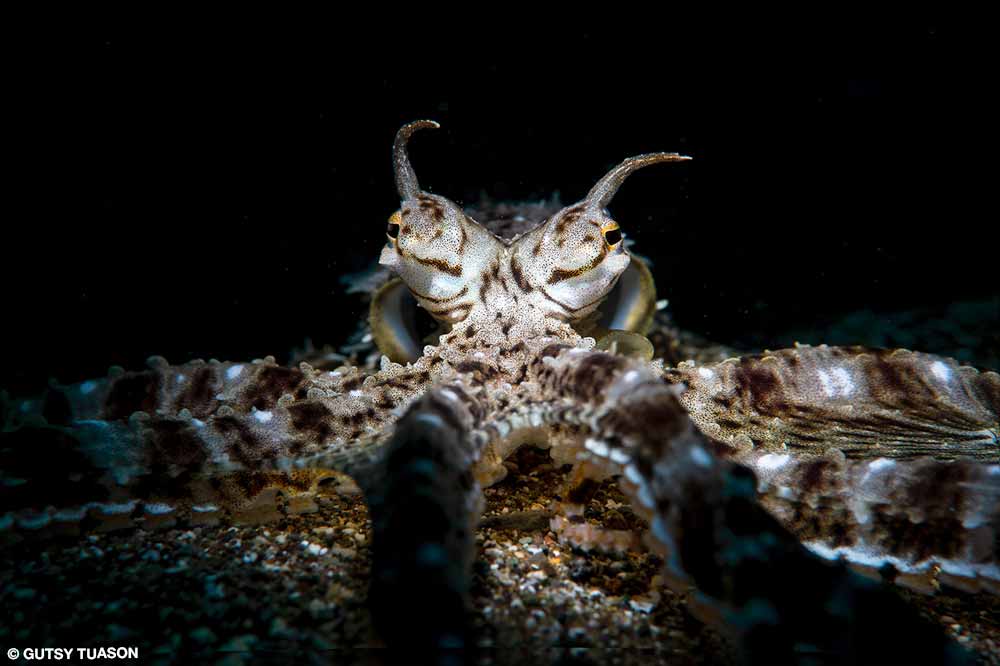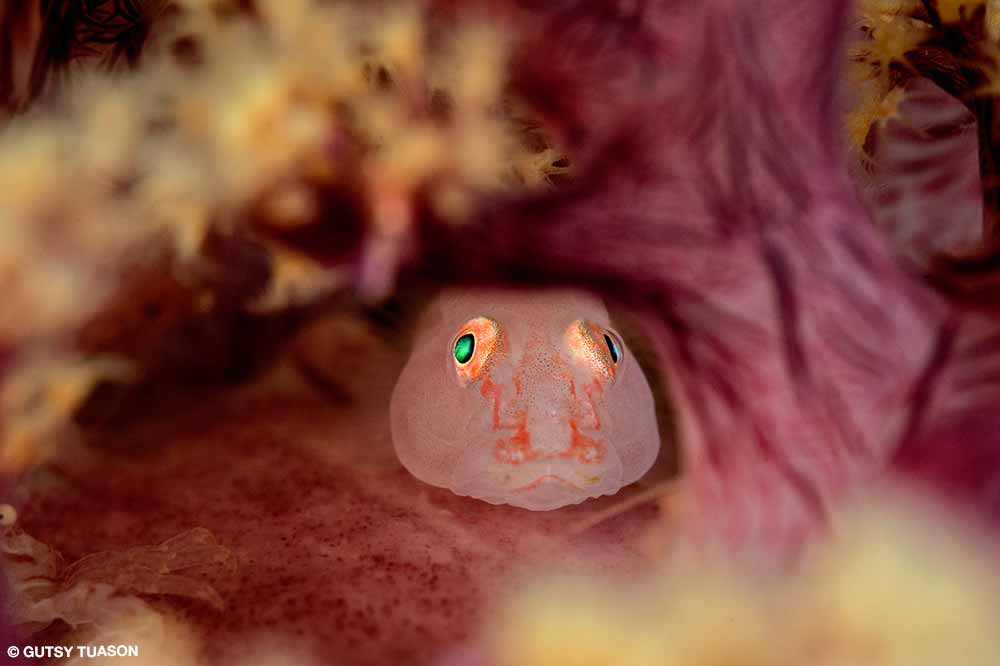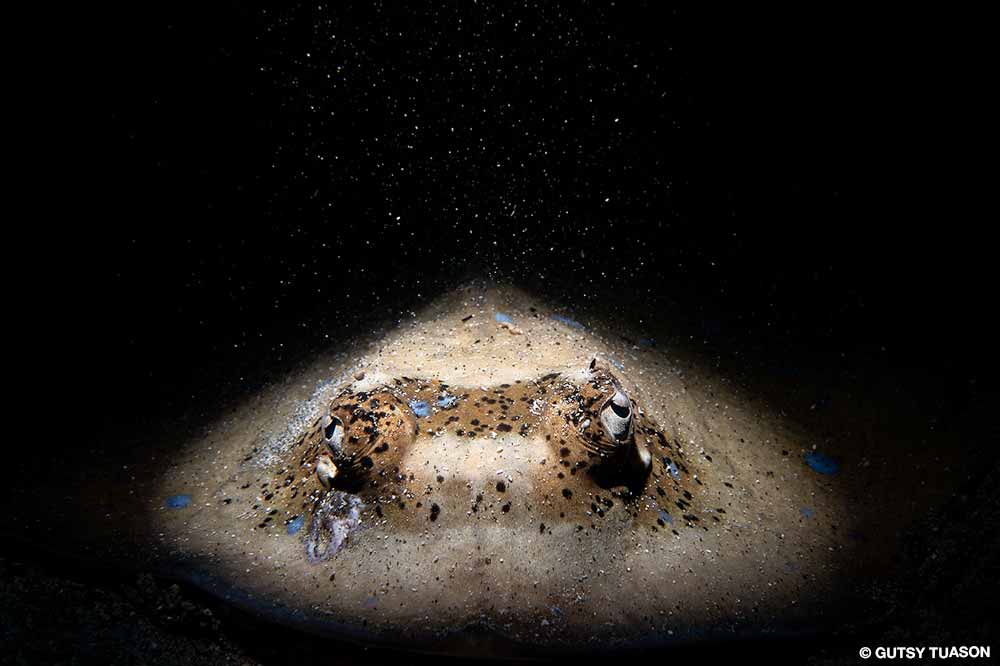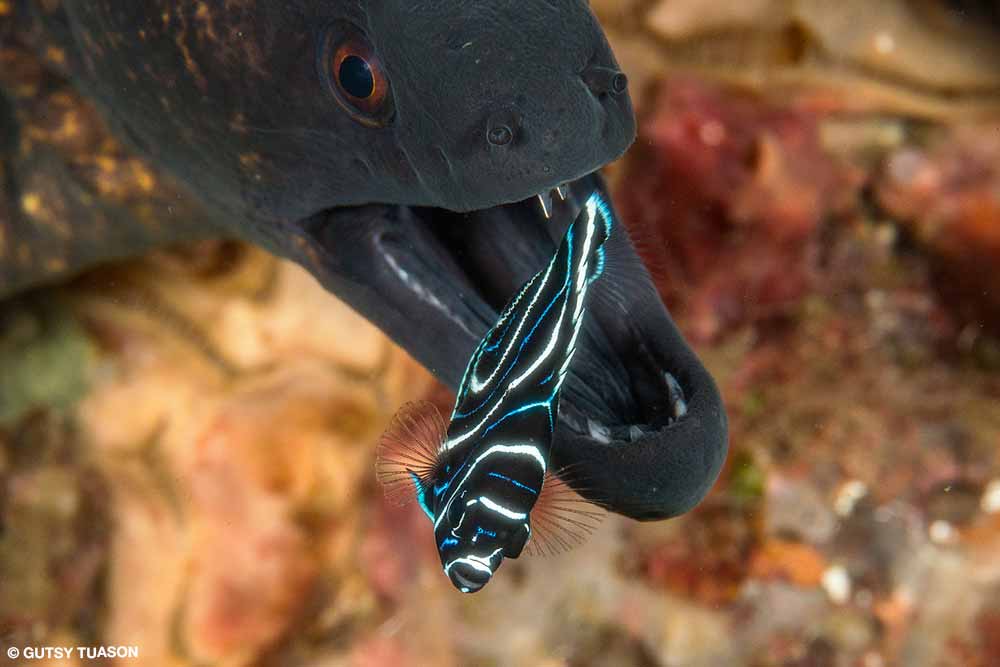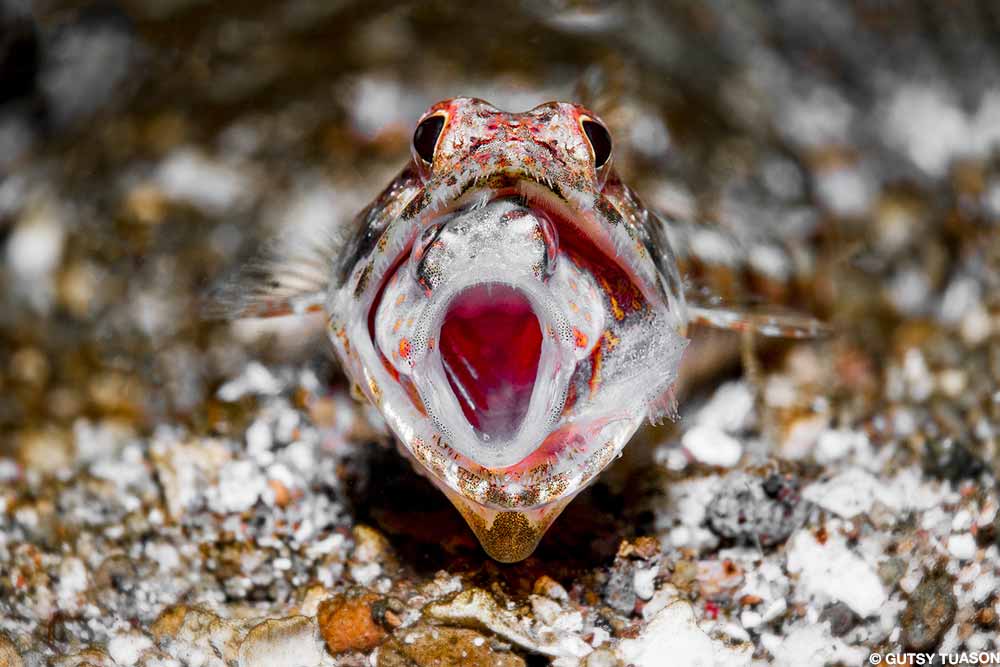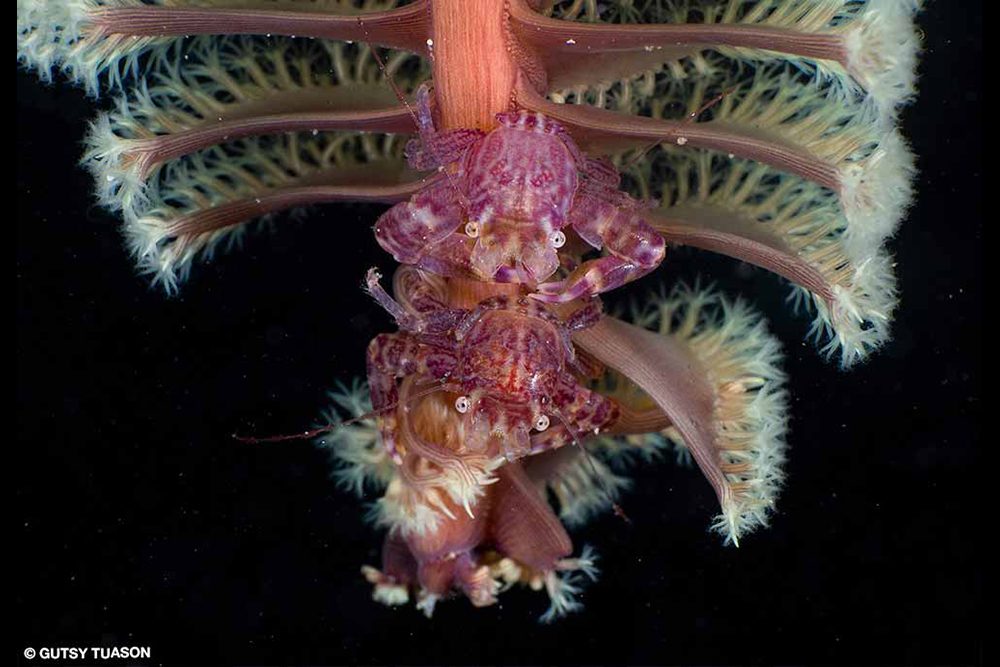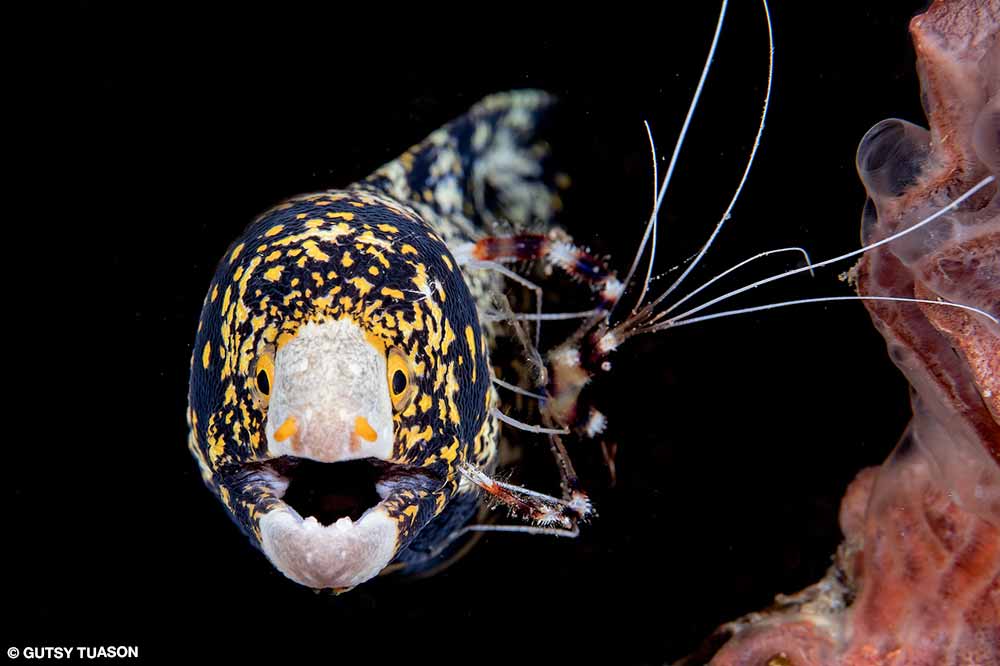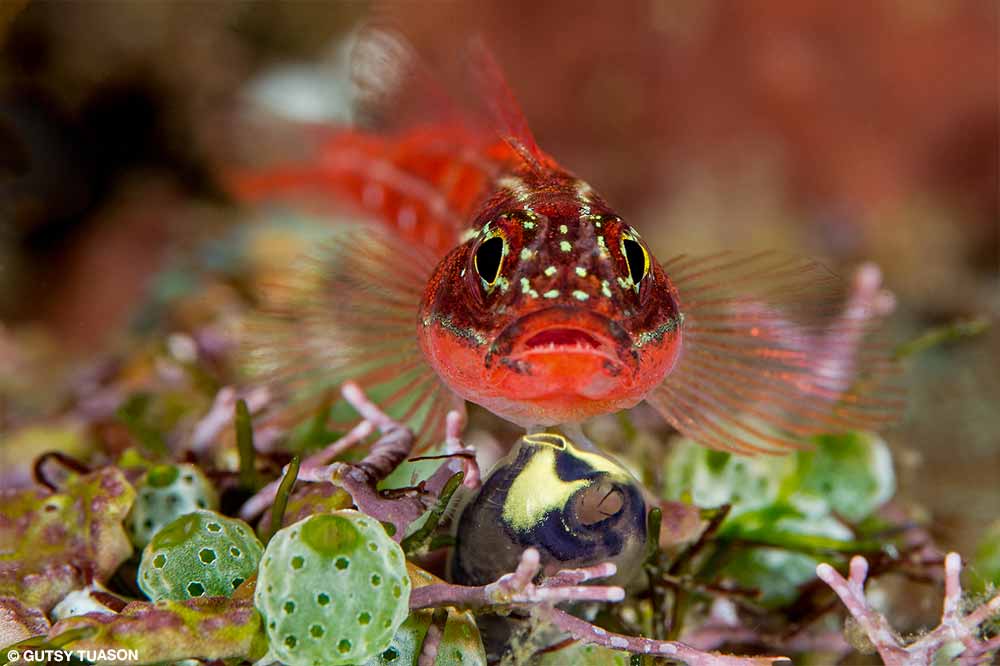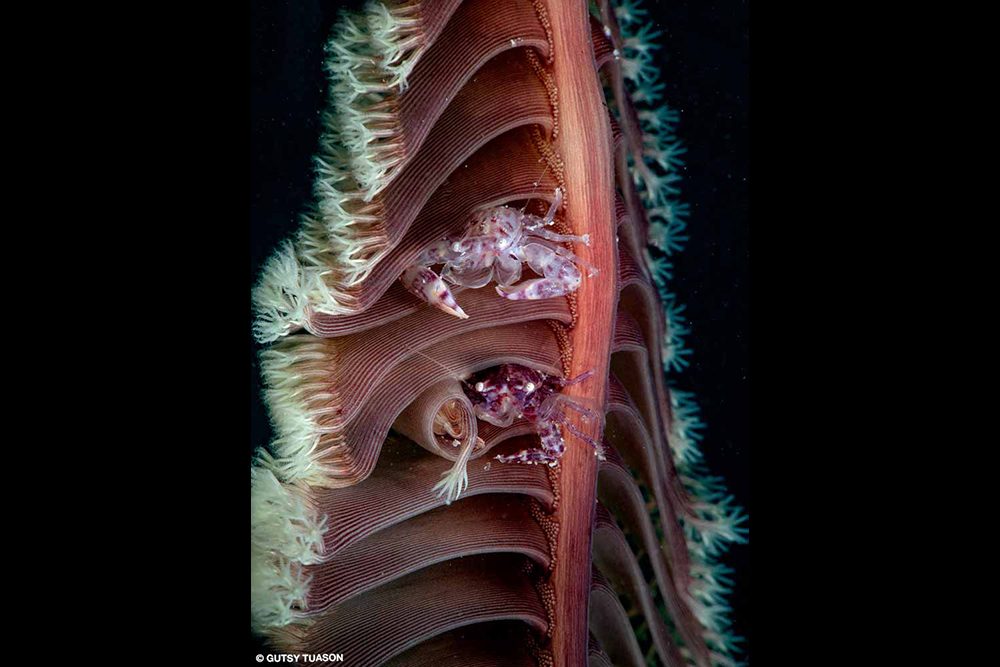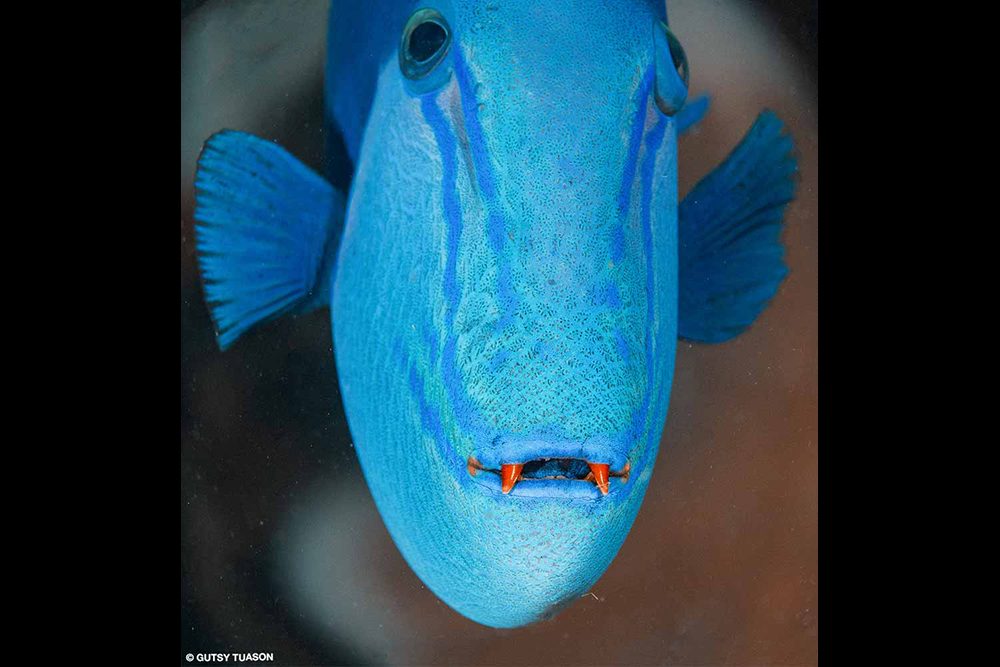I FIRST MET SCOTT “GUTSY” TUASON at a Diving Equipment and Marketing Association (DEMA) trade show in 2016. “You need to see his blackwater work. You’ll be blown away,” Marc Bauman of Sam’s Tours said before introducing us. Tuason had just published Eaux noires / Open Blue. As we sat in the Sam’s Tours booth, I thumbed through the book’s pages amid the distractions of a trade show. I was indeed blown away and later was able to give the photos and captions the slower pace and appreciation that a fine coffee-table book deserves. The book features blackwater macro photography and pelagic encounters with whales and sharks (hence the “open blue” appellation), but blackwater photography has been Tuason’s singular focus for quite some time.

We connected on Instagram, and I became more familiar with his vision’s excellence and eclectic nature with each photo. His macro photography — not just blackwater but also general coral reef minutiae — surprised me the most. So much of macro photography is reminiscent of a documentary, yet Tuason manages to infuse each image with artistic execution through his use of composition and light. Here is a glimpse of the man behind the photos.
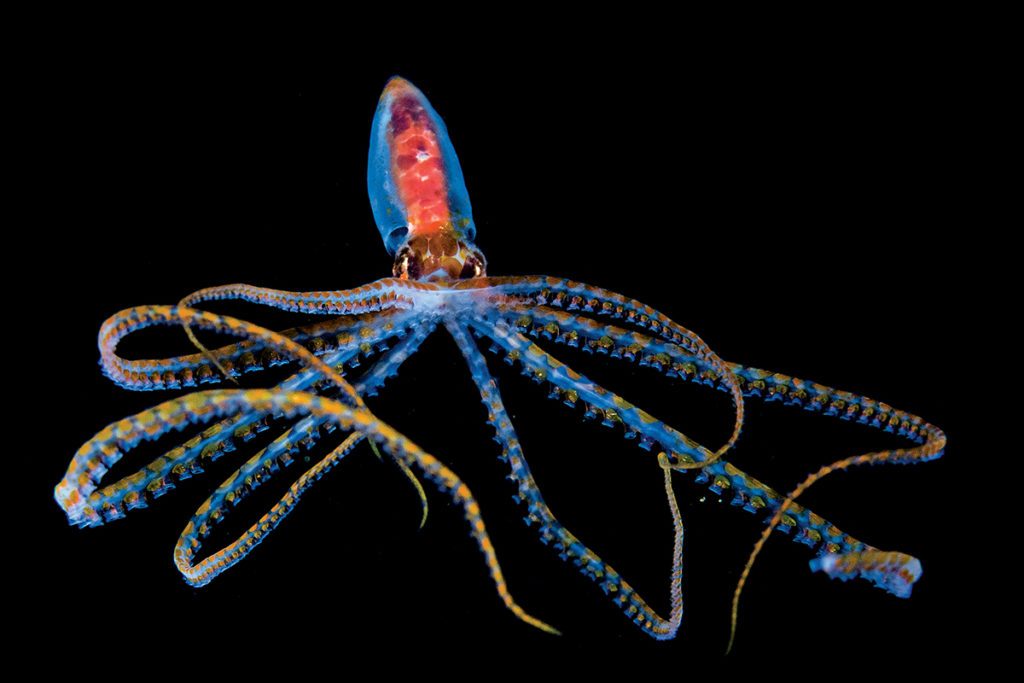
Atteindre un tel niveau d'excellence témoigne d'un engagement à faire de la photographie sous-marine un mode de vie. Comment en êtes-vous arrivé là ?
Je pense que j'ai eu la révélation dans les années 1980 en voyant le travail que David Doubilet effectuait dans le cadre de l'initiative National Geographicce que vous faisiez en Plongeur en peau et le travail novateur de Chris Newbert dans son livre Dans une mer arc-en-ciel. By then I had a Nikonos V and a 35mm lens, but I wasn’t getting photos like those I saw on your pages. Wide-angle shots were especially hard for me to figure out. Using a 35mm lens meant I had to get farther away if I wanted to shoot something large. I didn’t know about water’s density compared to air and the blue cast subjects have at more than about 4 feet away, so I kept shooting from 15 feet and coming home with blue and poorly focused photos. Then I figured out the secret sauce. You all had the 15mm lens for your Nikonos cameras and could capture large subjects from a short distance. It seems so obvious now, but it was a revelation then.
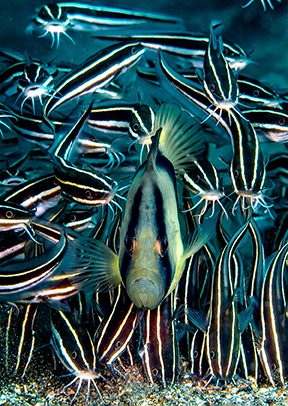
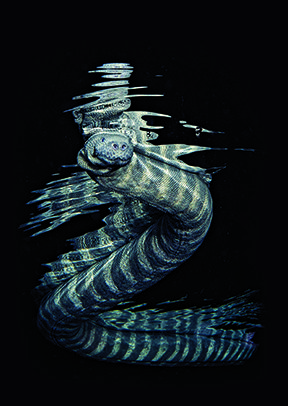
Comment en êtes-vous arrivé là ? Étiez-vous déjà impliqué dans la photographie, ou étiez-vous d'abord plongeur ?
For that, we need to go back to my time as a child in Australia and then the Philippines. My mom is Australian, my dad is Filipino, and they met as students in Australia. We lived in Australia for a while, but I was too young for that to be formative for me in terms of diving. Once we moved to Manila, I was only 75 miles from Anilao. This was 1976, and I was just 8 years old, but we often went to Anilao. I snorkeled until I was about 10. My dad saw me tagging around in the shallow waters above him while he dived and finally said, “Here’s a regulator; follow me.” By 1980 I’d done my junior open-water course, and by 1985 I had my advanced certification.
Anilao remained a weekend getaway for my dad and me. By 1979 I had evolved from finishing whatever air was left in my dad’s bottle to finally having my own gear. But I think the real game changer came when a Spanish professional photographer, who then-president of the Philippines Ferdinand Marcos had commissioned to do a coffee-table book on our country’s visual wonders, hired my dad and Eduardo Cu Unjieng as dive guides. The team booked a three-week liveaboard dive trip to visit all the Philippine dive hotspots, which divers from North America travel around the world to visit. It was like a backyard to us, even though it was all new to me at the time. I had a 50-cubic-foot tank, a horse collar buoyancy compensator, and my own regulator, and I was keen to take it all in.
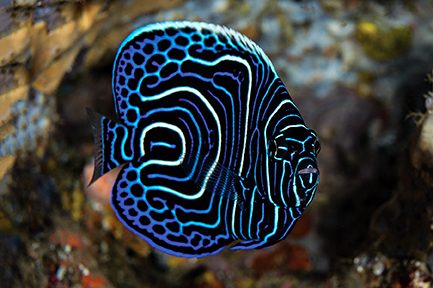
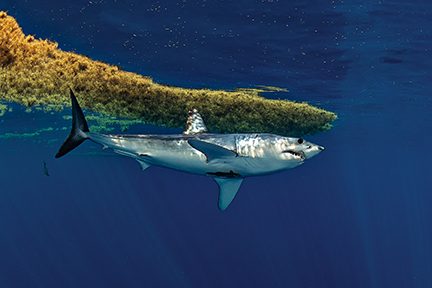
Qu'en est-il de la photographie sous-marine ? Votre père était-il lui aussi un passionné de photo ?
Il l'était. Il possédait un Nikonos III et essayait de conserver quelques images pour que je puisse les photographier à la fin d'une plongée. Je conservais ces images jusqu'à ce que je voie quelque chose de significatif, puis je prenais la photo. Cela m'a inculqué une bonne discipline qui m'accompagne encore aujourd'hui. Pour mon 16e anniversaire, j'ai reçu le kit de mes rêves : un Nikonos V avec un objectif 35 mm et un stroboscope SB103. J'ai emporté ce kit avec moi lorsque je suis allé à l'université de Tampa, en Floride, et que je me suis inscrit au programme de biologie marine.
I’m not sure that I was passionate about marine biology, but it allowed me to dive. I soon figured out there was more to the program than diving, and most people who had a career in that field didn’t dive much. By then I was getting into photography and took a fine art photo class from Lew Harris, who inspired me and remains a dear friend. They had only two classes, an introductory class and “special problems,” so I took the same problems class every semester for two years, always trying to shoot a better photo or do a better job with it in the darkroom.
Eventually, I got a bachelor’s degree in economics, which I didn’t need for my first jobs after college: teaching tennis and cleaning yacht hulls. I also worked in a framing shop to earn money, but in the end my dad told me what I already knew: “You aren’t American, you are in jeopardy of overstaying your visa, and you need to come home.”
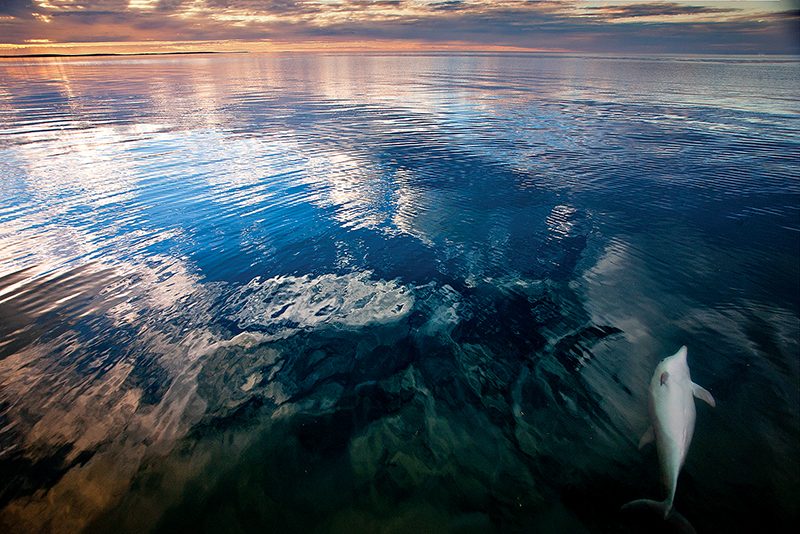
Que signifiait pour vous le retour à la maison en tant que jeune diplômé en économie ?
Cela signifiait travailler dans l'entreprise familiale. Nous étions fabricants d'armes à feu depuis 40 ans et je m'occupais de la vente en gros. Je reconnais aujourd'hui que je ne m'intéressais pas à l'entreprise. Il était difficile d'obtenir des congés et tout ce que je voulais, c'était m'absenter du travail pour plonger et prendre des photos. J'ai réussi à créer une branche de l'entreprise qui me convenait mieux. Mon idée était de créer un espace de vente au détail pour vendre du matériel photographique sous-marin et du matériel pour le golf, le tennis, le squash et la plongée, en plus des armes à feu.
There was a photo print shop established in 1905 called Squires Bingham Photo Print, and they mostly created picture postcards. By the 1930s it had expanded to include sporting goods. My grandfather bought the business in 1941, shortly before the Japanese invaded the Philippines. I always found it interesting that the family business had its roots in photography before growing into our sporting goods store, Squires Sports Philippines. It is now my business, and while we sell dive gear, we aren’t a dive shop. We don’t do rentals or air fills, but we do have high-end retail. We also do dive travel, and I get to lead the tours. Before the pandemic, some of our more popular trips were to Tubbataha, Cocos, Socorro, Tonga, and Norway, where we focused on orcas. I will be back to Tubbataha soon, and it’s a good feeling to know our travel business is getting active again.
Do you still get to dive Anilao much since it’s close to your home in Manila? I see so much amazing blackwater work from there, and I heard you started it in the Philippines. Is that true?
I still dive Anilao on weekends whenever I can. It never gets old for me. As for blackwater, I went to Hawaiʻi for a wedding in 2012 and did the famous manta night dive in Kona. The local dive shop offered a second night dive on the manta trip to do a blackwater drift. I was in awe of the creatures we were seeing, but it also occurred to me that I could do this in other places. When I returned to the Philippines I tried the same protocols, but not without resistance. No one wanted to take me out on their boat late at night to drift along in deep water and shoot tiny things some people couldn’t even see. But I persevered, and I think you could safely say I started blackwater diving in Southeast Asia.
Huel temps vous a-t-il fallu pour rassembler les travaux que vous avez publiés dans Eaux noires / Open Blue?
Cela faisait environ trois ans que je prenais régulièrement des photos sur ce thème. Je savais qu'il s'agirait d'une niche photographique importante et je voulais être le premier à publier un livre. Les identifications étaient difficiles. J'ai d'abord contacté Jerry Allen, l'un des meilleurs spécialistes de l'identification des poissons. Il m'a aidé quand il le pouvait, mais les animaux étaient si obscurs et si peu photographiés dans la nature qu'il m'a envoyé voir d'autres experts, comme un spécialiste des méduses ou un gourou des céphalopodes.
Quel est votre objectif principal en matière de photographie sous-marine aujourd'hui, et où souhaitez-vous voir vos photos publiées ?
I think books will always be my thing. My books on Anilao and Bahura are Philippines portfolio books, and I’ve collaborated with others on books about seahorses, dolphins, Philippine coral reefs, and some topside subjects, like one I shot for the Manila Golf and Country Club. I’ve done 11 books so far, and I have ideas for several more that I’m currently working on. Magazine articles are not for me; the pace is too fast, and I can’t deal with the whole writing-on-a-deadline routine. I like to let the ideas germinate more slowly and shoot to a theme.
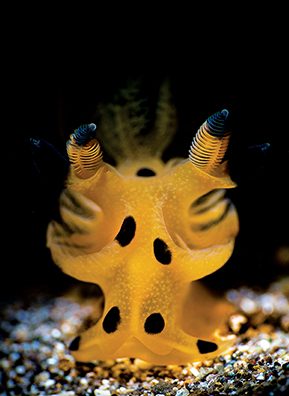
En savoir plus
See more of Gutsy Tuason’s work in a bonus photo gallery and in this vidéo.
© Alert Diver - Q2 2022
